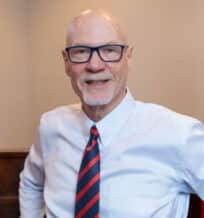On December 21, 2015, Barbara Dawson found herself in a distressing situation.
She had been a patient admitted to Calhoun Liberty Hospital in Blountstown, Florida for abdominal pain, and was discharged that day by the hospital staff. However, Ms. Dawson made her protests to that plan known, and in response, the hospital called the police department to remove Ms. Dawson. “No, no, no, no,” Dawson stated to the responding officer who was called once she refused to leave her hospital room. She protested that she felt sick.
As captured in audio by the police officer’s vehicle dashcam, the officer speaks calmly to Ms. Dawson, as she repeatedly cries out, “Oh my God, oh my God, oh my God.” She is then taken outside, and collapses. She lies on a parking lot for almost 20 minutes before being rushed back into the hospital, where she ultimately dies about 90 minutes after the officer first arrived.
While investigations are currently underway as to the surrounding circumstances of what happened, audio reveals that Ms. Dawson shouted to the officer that she can hardly breathe, and shouts “Please don’t let me die!” at another point. Despite those statements, the officer continued to handcuff Ms. Dawson. When Ms. Dawson collapsed outside, a physician approached her, and noted that the situation “is totally different than what she was when I was discharging her.”
The medical examiner reported that she died from a blood clot in her lungs, which is often immediate and fatal—difficult to detect and often impossible to treat. The hospital stated that, while they couldn’t discuss her situation directly, they generally only ask for patients to be removed when there is “a cause for concern about other patients’ care or safety.” Additional information reveals that hospital staff has called police multiple times since 2006 in regard to disturbances by Ms. Dawson.
Ms. Dawson’s family indicated they are currently considering a lawsuit against the hospital and police department.
Ms. Dawson’s family’s attorneys may choose to bring a wrongful death lawsuit as a result of Ms. Dawson’s death. Wrongful death is a death that occurs due to the negligence or misconduct of another. To prove negligence, the Plaintiff must show that the Defendant owed a duty to the deceased to use reasonable care, breached that duty, and, as a result, caused the decedent’s death. Damages must also be proven as a result of the death, as damages are not presumed in negligence cases. Because Florida is a “pure comparative” negligence state, damages may be apportioned against parties based on those parties’ percentage of fault (and not on the basis of the doctrine of joint and several liability). Therefore, a jury could, in this case, apportion fault to more than one party, and this could include the injured – or in this case – deceased, party. If Ms. Dawson is found to be partially negligent, the amount of damages her family would receive would be reduced in accordance with the percentage of fault the jury assigns to her.
This case will be an interesting one to watch. For more discussion on wrongful death lawsuits, including the standard, and who may bring a lawsuit, click here. If your loved one has died as a result of another’s negligence, call us today. We can help determine whether you are entitled to any compensation.













